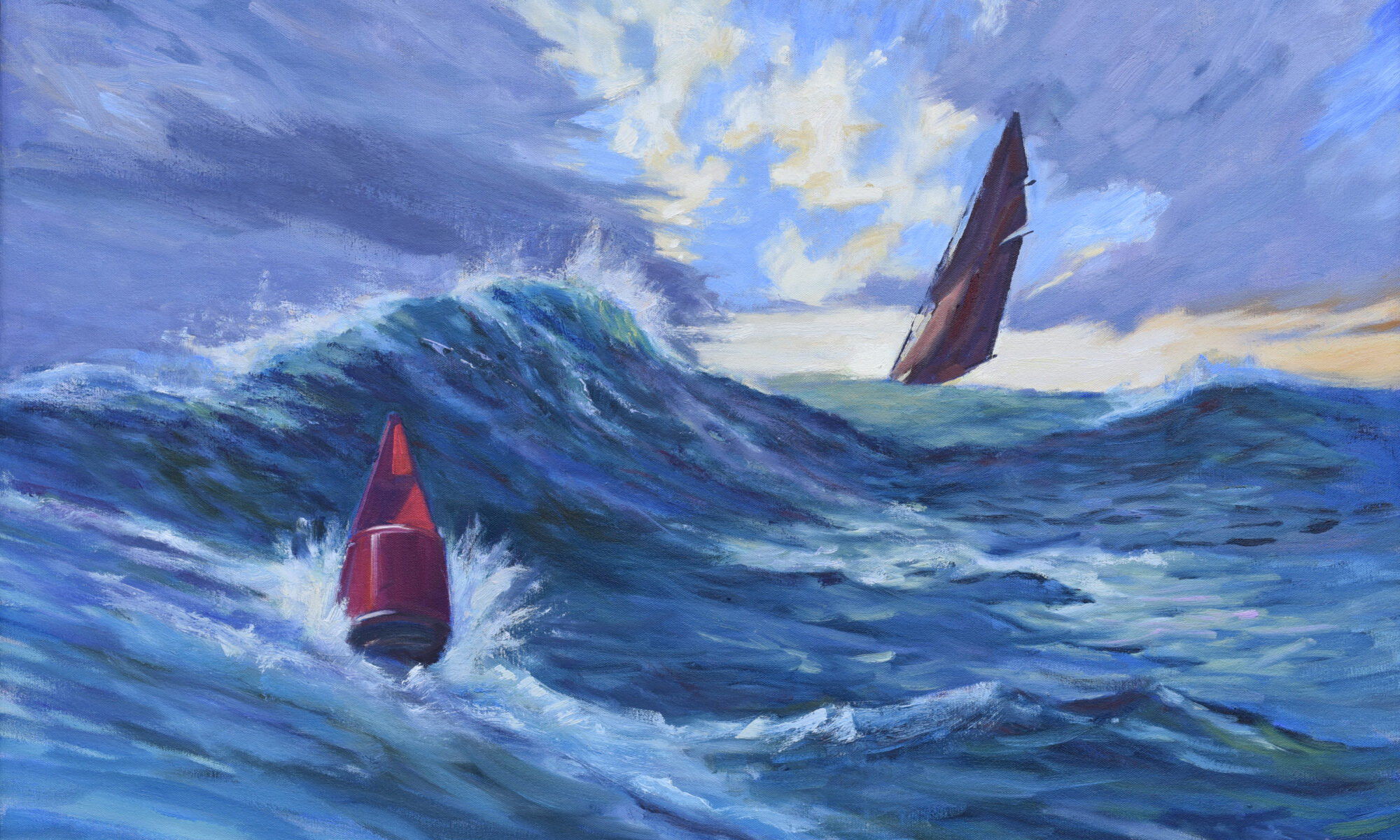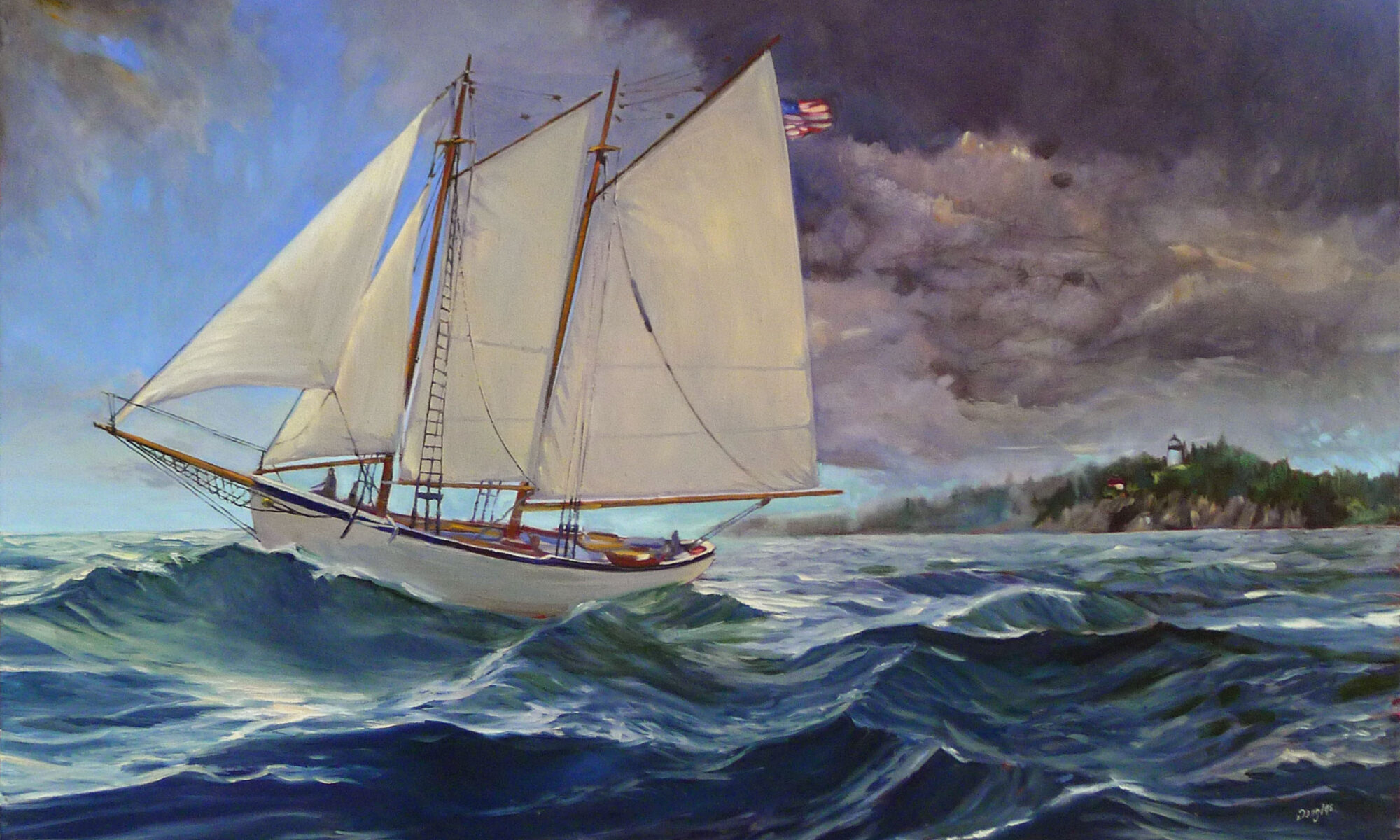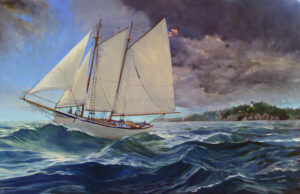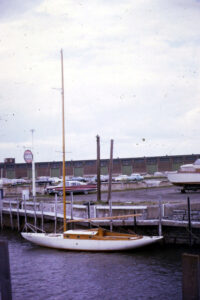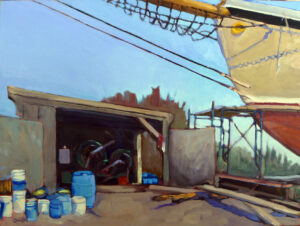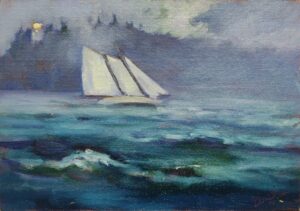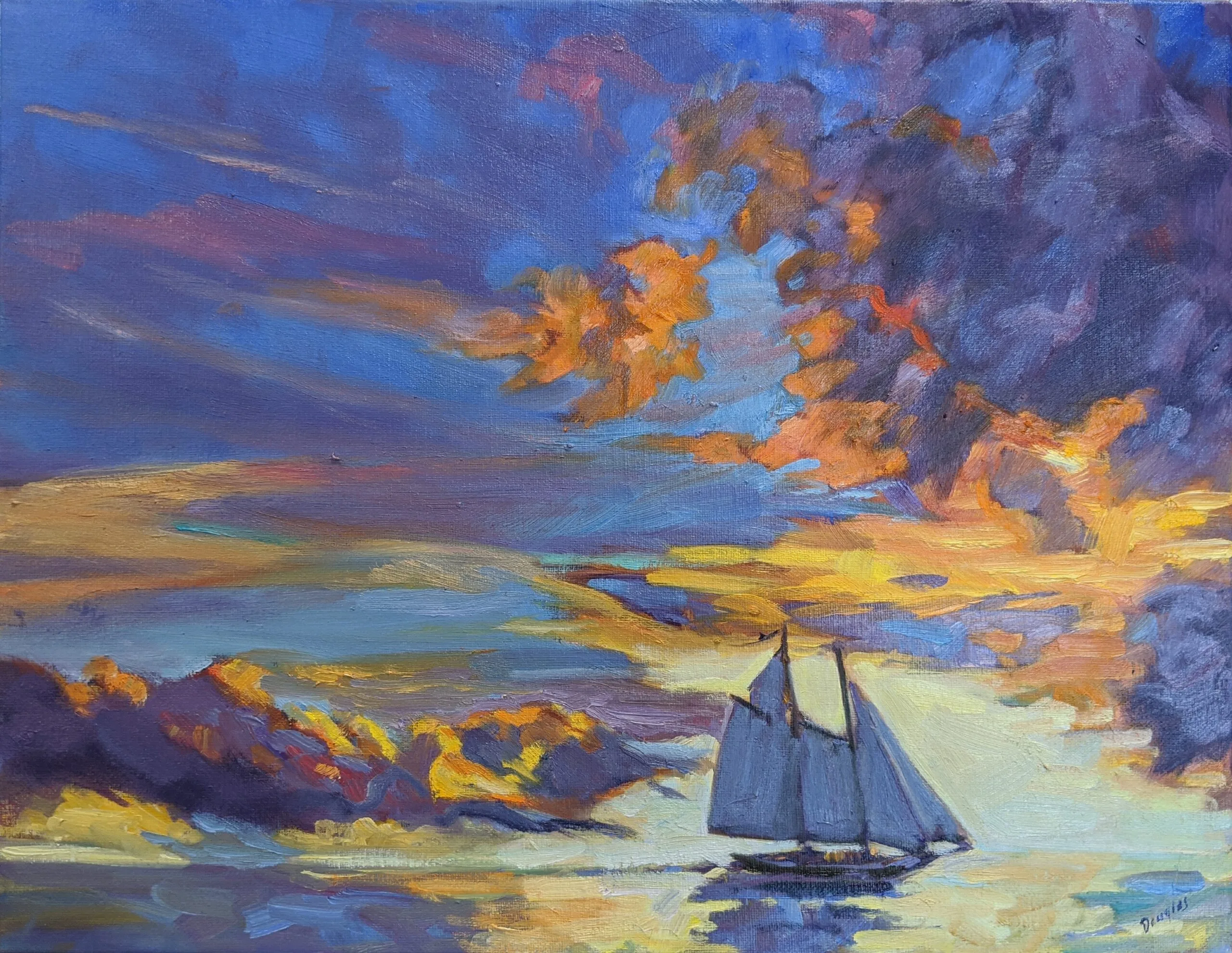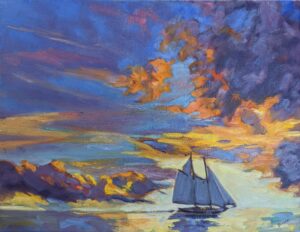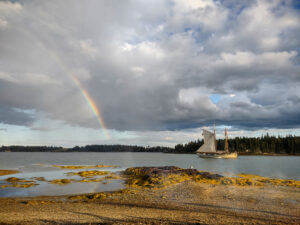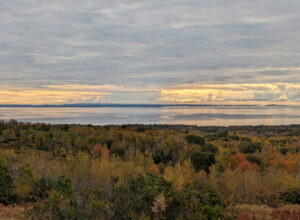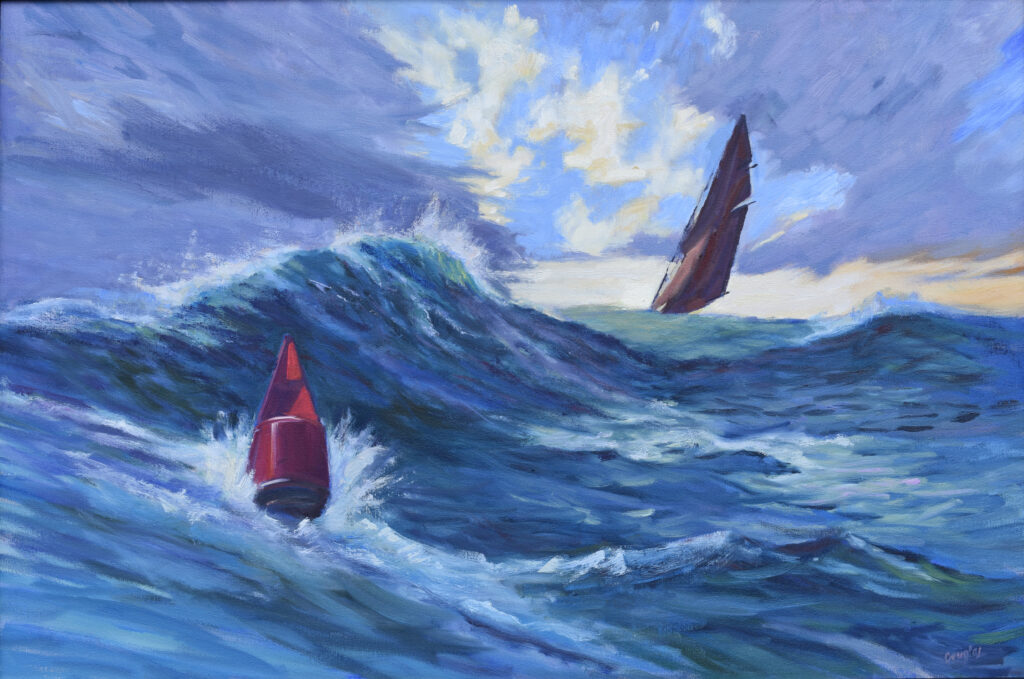
That red buoy on the left is a nun. Red marks the edge of the channel on the starboard side when a boat is heading in from the open sea. That tells us the ketch Angelique is heading into port, running through a very changeable sea.
Last winter I was asked to do an online demo of a marine painting by the North Weald Art Group in Surrey, England. They didn’t care whether I painted boats or the sea, so I gave them both. As you know, I’ll take any opportunity to paint a boat, paint on a boat, or look at paintings of a boat. But I also wanted to demonstrate painting waves, because they have the potential for great power in their design.
The problem with a split subject is in giving equal weight to each part. That’s good for demonstrating two separate subjects, but not so great in composition. By adding the nun (the red buoy), I was able to tie together and energize the composition, echoing the red of the nun in Angelique’s tanbark sails. If you’re interested in painting sails, Angelique’s are fun because they create a bold dark shape against the sky.
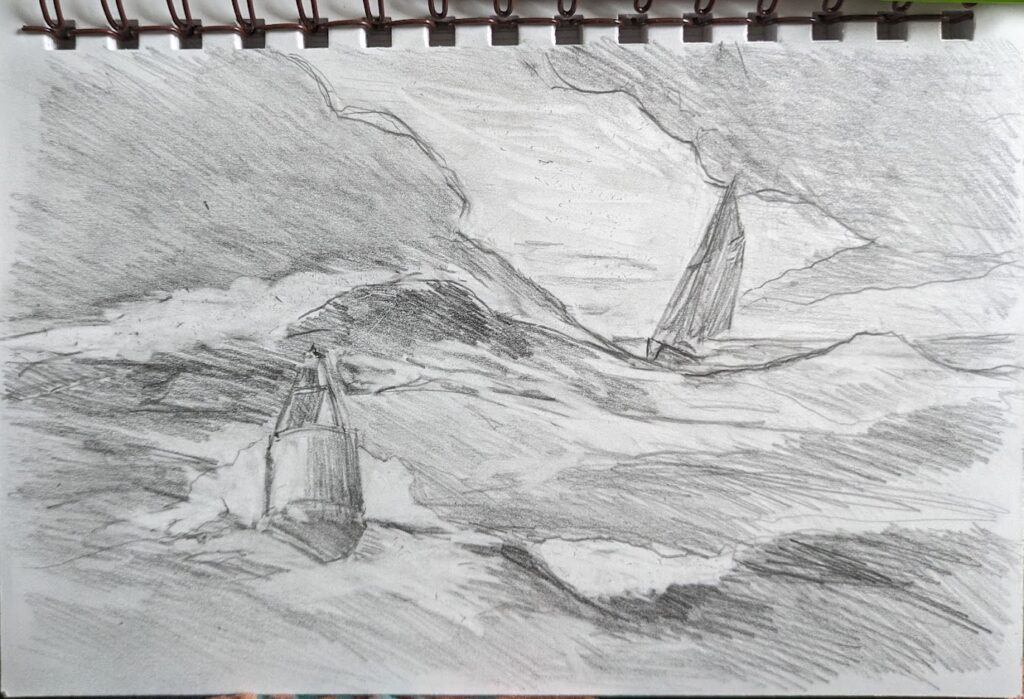
I could have painted a small oil painting in the allotted two hours, but that would have been difficult for the North Weald people to see on their small monitors. Working large meant I had no chance of finishing; I had to preload some of my demo.
I started with an idea board. Except for the nun, none of these photos were to be quoted verbatim (meaning there aren’t any copyright issues). I drew my composition and transferred it to the canvas. Then I made an educated guess about my palette and premixed my colors. All of that took just moments to describe, and that allowed me to get right to the heart of the painting.
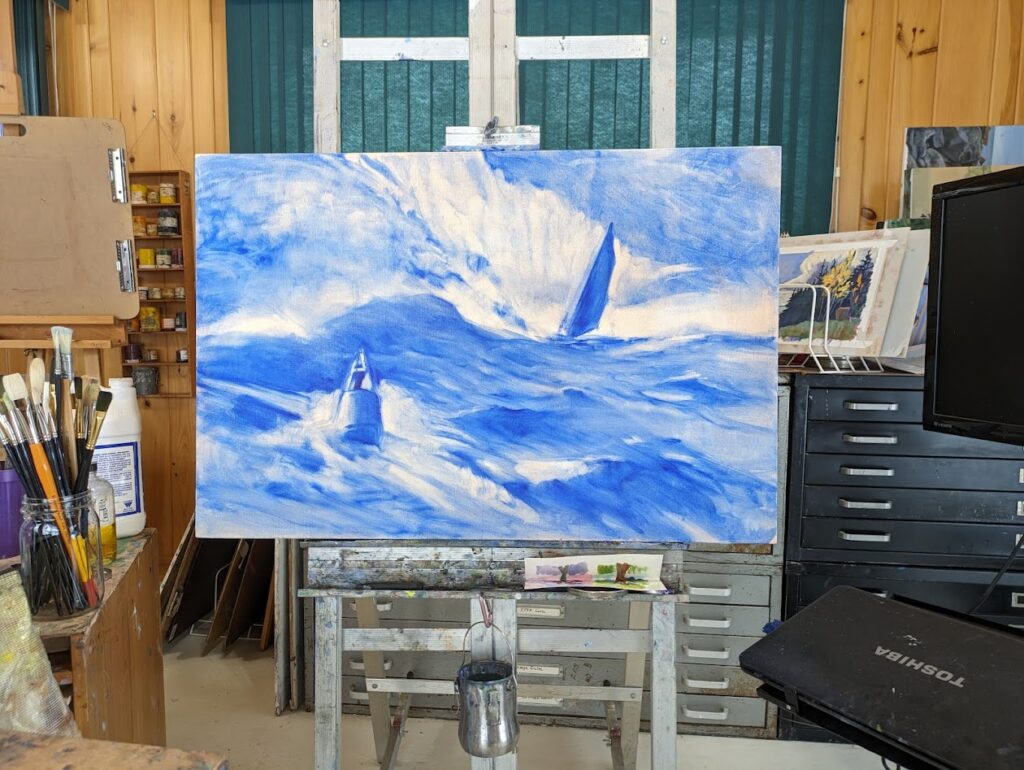
Up to that point, my interest was purely pedantic; I just wanted to demonstrate painting sails and painting waves. But once I had my brushes in my fat little hand, the painting grabbed me by the scruff of the neck. My time flew by. “Are you sure you must go?” I asked them. “I’m good for another few hours.”
My problem in painting waves is that I enjoy it so much I can just keep painting the same ones over and over, in a sort of meditative state. Finally, it was time to say “enough is enough” and declare them finished.
This painting is now hanging at Lone Pine Real Estate’s new office at 17 Elm Street, Camden, ME. Broker Rachael Umstead invited me to hang paintings in their newly-decorated space so I brought her an assortment of 16 of my favorites. I shot some video hoping to put together a reel, but I was just too tired, and it flopped. No problem; Rachael shot a super-cute reel, which you can see here.
Reserve your spot now for a workshop in 2025:
- Canyon Color for the Painter, Sedona, AZ, March 10-14, 2025
- Advanced Plein Air Painting, Rockport, ME, July 7-11, 2025.
- Sea and Sky at Acadia National Park, August 3-8, 2025.
- Find Your Authentic Voice in Plein Air, Berkshires, MA, August 11-15, 2025.
- Immersive In-Person Fall Workshop, Rockport, ME, October 6-10, 2025.

